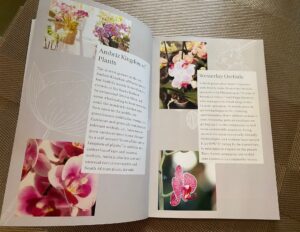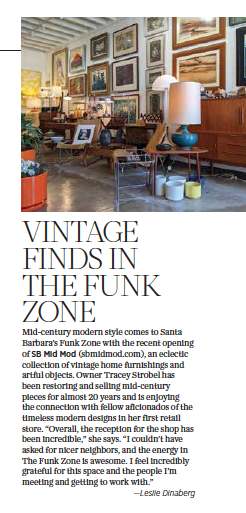 Orchids are an exotic and fascinating species, with a lavishly colorful array of flowers in bloom in Santa Barbara County. Along with being the home of the renowned Santa Barbara International Orchid Show (scheduled to be back in-person for the 76th annual festivities on March 11-13, 2022), the region between the Santa Ynez Mountains and the Pacific Ocean has seeded an industry that produces more orchids than any other part of the country. This stretch of the American Riviera is known as the Santa Barbara County Orchid Trail, and there is no better way to traverse the region and discover it for yourself.
Orchids are an exotic and fascinating species, with a lavishly colorful array of flowers in bloom in Santa Barbara County. Along with being the home of the renowned Santa Barbara International Orchid Show (scheduled to be back in-person for the 76th annual festivities on March 11-13, 2022), the region between the Santa Ynez Mountains and the Pacific Ocean has seeded an industry that produces more orchids than any other part of the country. This stretch of the American Riviera is known as the Santa Barbara County Orchid Trail, and there is no better way to traverse the region and discover it for yourself.
James and Lauris Rose have owned this boutique nursery since 1987, and its diverse inventory reflects their keen eye for the unusual. “We have an insatiable desire to improve on what people generally see in the marketplace,” says Lauris. Known for their unique line of Epidendrum hybrids, particularly the Reed-Stem Epidendrum hybrids, Cal-Orchid’s breeding program focuses on “taking something that’s average and making it very special is a passion for us.” she says.
1251 Orchid Drive, Santa Barbara, 805/967-1312, www.calorchid.com
Gallup & Stribling Orchids
A premier supplier of orchids to the world for more than 60 years, Gallup & Stribling’s home farm occupies close to 50 acres in Carpinteria. Now owned by the Van Wingerden family, who emigrated from Holland to the Central Coast in the 1960s to bring generations of farming knowledge to the area’s cut flower industry, Owner Case Van Wingerden says they have diversified their holdings over the years to include orchids and cannabis, as well as a variety of fresh produce that is available for sale on-site. “Gallup is probably the last commercial Cymbidium orchid grower left in the county.” he says. They also offer a wide selection of Phalaenopsis (the biggest selling orchid in the country) as well as Galilea Orchids and Lady Slippers.
3450 Via Real, Carpinteria, 805/684-1998, www.gallup-stribling.com
A third-generation family business with Dutch roots, Westerlay Orchids specializes in Phalaenopsis in tons of beautiful colors, says Paige Harmon, who manages the retail shop of this 21-acre operation. As restrictions on gathering begin to lift, keep an eye out for announcements of in-person flower arranging and orchid care classes. Growing approximately three million orchids a year, Westerlay puts an emphasis on giving back to the community as well as on sustainable practices. Using innovative, environmentally-friendly technologies and systems have earned it an MPS “A” rating for best practices to minimize its impact on the planet.
3504 Calle Real, Carpinteria, 805/684-5411, www.westerlayorchids.com
Ambriz Kingdom of Plants
The newest grower on the trail, Ambriz Kingdom of Plants’ Owner Joe Ambriz mostly focused on the crowds at the Santa Barbara International Orchid Show and some wholesaling to local nurseries until the pandemic hit last year. Now open to the public, his greenhouses focus on Lalias Anceps and Cattleyas and generally temperature tolerant orchids, i.e. “ones we can grow outdoors here in our climate.” As a self-avowed “lover of the entire kingdom of plants,” in addition to a collection of rare and unusual orchids, Ambriz also has rare and unusual cactus succulents and South African plants for sale.
4998 Foothill Road, Carpinteria, 805/570-5792, www.facebook.com/ambrizkingdomofplants/
This story originally appeared in American Riviera Media.













